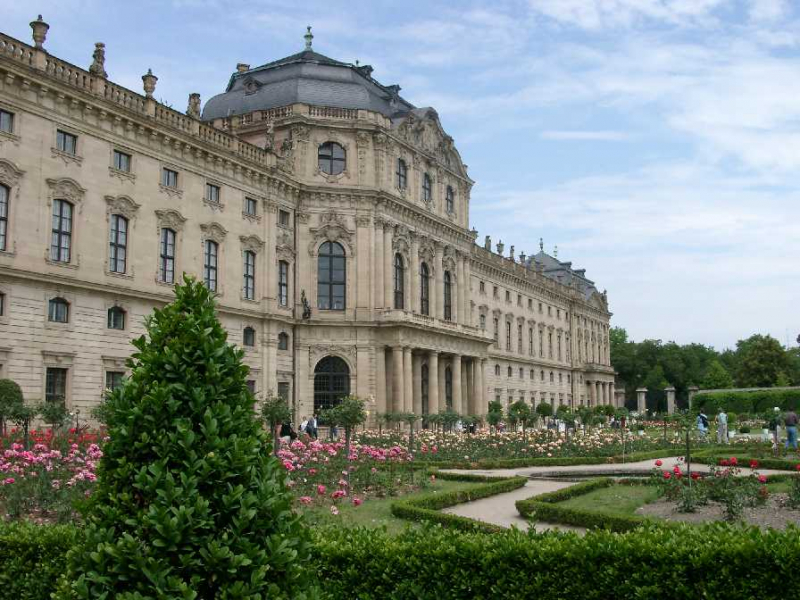Würzburg Residence
In Würzburg, Germany, the Würzburg Residence (German: Würzburger Residenz) is a palace. The building was overseen by Johann Lukas von Hildebrandt and Maximilian von Welsch, representatives of the Austrian/South German Baroque style, as well as Robert de Cotte and Germain Boffrand, followers of the French Style. The Residence was designed by Balthasar Neumann, the court architect of the Bishop of Würzburg, and was commissioned by the Prince-Bishop of Würzburg Johann Philipp Franz von Schönborn and his brother Friedrich Carl von Schönborn in 1720 and finished in 1744. The building's paintings were painted by Giovanni Battista Tiepolo, who was aided by his son Domenico.
The great staircase, the chapel, and the Imperial Hall are all regarded as masterworks of Baroque/Rococo or Neoclassical architecture and art. Napoleon is said to have referred to the structure as the "biggest parsonage in Europe." Allied bombing severely destroyed it during WWII, and restoration work has been ongoing since 1945. Because of its remarkable Baroque art, design, and architecture, the Residence has been a UNESCO World Heritage Site since 1981.
The "Residence is a record of European culture," according to UNESCO, which designated Würzburg as a World Heritage Site in 1981. Perhaps no other monument from the same era can boast such a talent synergy."
Location : .Residenzpl. 2, 97070 Würzburg










